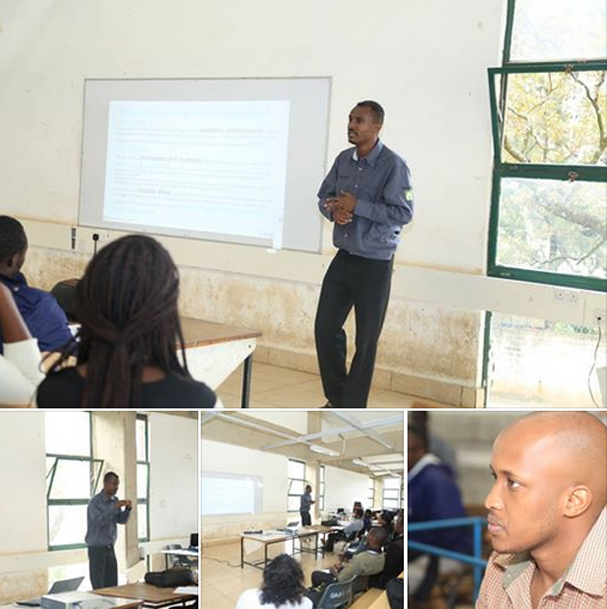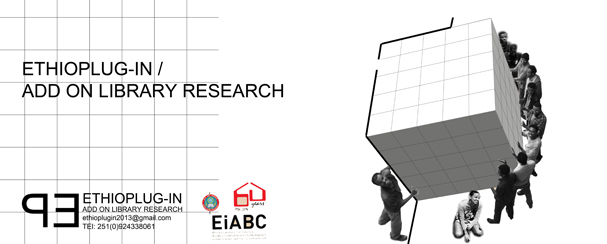
On Januaryof 2010 the research ethioplug-in/ Add on library was conceived with an objective of preparing plug-ins (add on library) to enhance different design, architecture and construction software with elements of Ethiopian heritages. The plug-ins are equipped with parametric digital Ethiopian heritages hence designers and students can apply them in their design projects as well as use them as teaching materials.
Currently the research is active and going strong after it has been allocated with budget on March of 2014 by the managing director (Dr. Ing. Béatrice Delpouve) and the director of research and consultancy (Dr. Heyaw Terefe) of Ethiopian Institute of Architecture, Construction management and City development (EiABC).
https://www.facebook.com/Ethioplugin
http://www.youtube.com/channel/UCBCijFO09tulBf2u5nWTtbg
This email address is being protected from spambots. You need JavaScript enabled to view it.
Article on Ethioplugin/ Add on library research
This email address is being protected from spambots. You need JavaScript enabled to view it.
Public Relations manager for Autodesk.
Meropa Communications, a leading communications agency in South Africa.
Dual masters in Journalism and International Relations
Ethiopian architectural history mapped using Revit and other Autodesk software
A university in Ethiopia is applying Autodesk software in a ground-breaking initiative to digitize and provide widespread access to the country’s architectural history.
The ambitious research is being conducted at the Ethiopian Institute of Architecture, Construction Management and City Development (EiABC) by the chair of CAD and geo-informatics. Ayele Bedada, Principal research conductor states, “Through conducting this research we intend to look back to our architectural heritage and trace its significance to the development of the local industry. Many attributes of our historic design have the potential to predict how Ethiopia’s design landscape evolves in future.”
Over and above capturing the history, the project’s main goal is to provide widespread digital access to Ethiopian’s unique architectural and construction details, furniture and utensil design, house designs, textures, patterns and even indigenous plants through specialized software applications.
This access is provided through a plug-in that contains:
Two-dimensional and high quality pictures of Ethiopian construction material textures, construction technique patterns and background images.
Three dimensional and parametric models of Ethiopian construction material details, furniture and utensils, Ethiopian house design types and indigenous plants (including a selection of trees and landscape elements).
Bedada adds, “By making these objects available to professionals worldwide and, more specifically, to emerging Ethiopian professionals in precise and practical ways, we will assist in advancing the Ethiopian industry of architecture and construction.”
The project began three years ago, when Bedada prepared the initial research. It has now expanded to involve several members of academic staff and a number of interested students.
The team has been using Autodesk Revit 2012, 2013 and 2014 software to model everything on this digital database. Bedada adds, “This was done using different predefined family templates from the default libraries such as metric generic and metric family templates.”
“The Building Information Modeling (BIM) methodology was a source of inspiration during the modeling phase of the research. Since Revit software is a leader in this field, it was used to great success in the implementation of this stage to produce parametric models of traditional Ethiopian objects and architectural details.”
Revit was specifically helpful in providing a controlled, efficient platform to model traditional objects through the use of family templates. As Revit is equipped with a specific template for different architectural components-including architectural details, furniture, fixtures and landscape elements-the software was the ideal vehicle to perform the full remit of tasks required for the research.
Revit’s ability to translate the different cultural and design nuances of various Ethiopian buildings and artifacts into an understandable, cohesive format was a defining positive aspect of the software. Ethiopia has numerous cultures, and each culture has design details unique to its community. As the research covers the entire country, it requires a tool that can organize a wide variety of data collection and modeling activities.
Bedada elaborates, “Since Revit is family based, the software made the modeling process more controlled and easy, saving a considerable amount of time. This is preferable to other software which has a complicated process of model making with multiple limitations placed on its flexibility and implementation.”
The software has also provided valuable learning opportunities for students at the institute. Bedada says, “Architecture students in their third year of studying professional CAD have been able to apply their new skills by taking part and contributing to the research.”
The results of this research will have a significant impact on Ethiopian architecture. Local institutes of design, construction and engineering have been trying for many years to encourage designers and builders to consider Ethiopian building construction techniques on their works.
This plug-in provides them with the software required to quickly and efficiently access traditional techniques, providing a further incentive to use them in their work.
The research will also market Ethiopia’s design to a wider platform. Bedada concludes, “In conducting this research, we will promote Ethiopia’s skill in design and architecture to the local and international community. This is projected to have a positive effect on the construction industry of the country.”
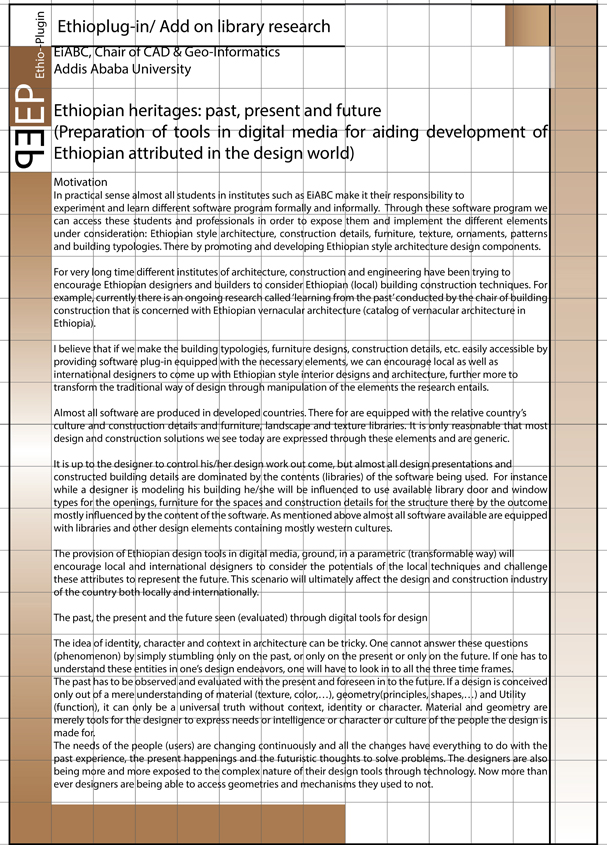
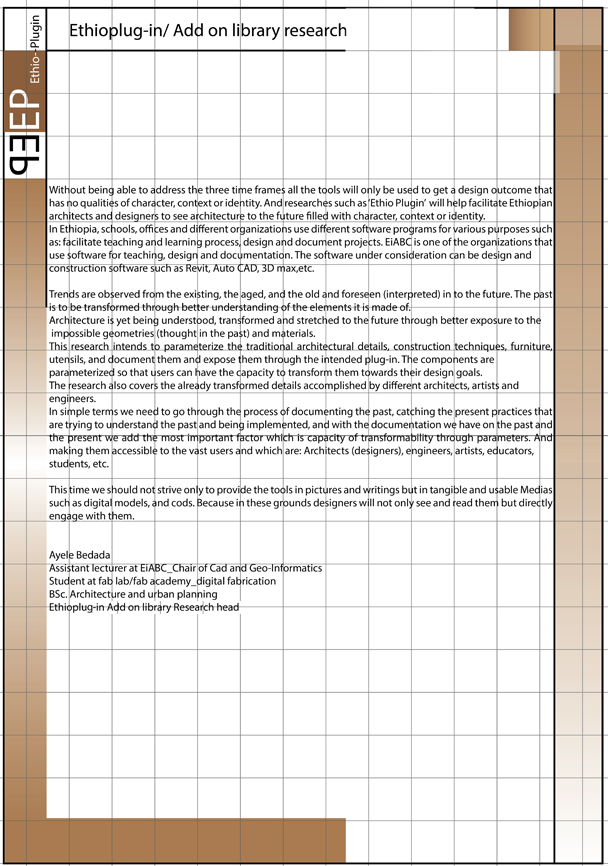
RESERCH STRUCTURE
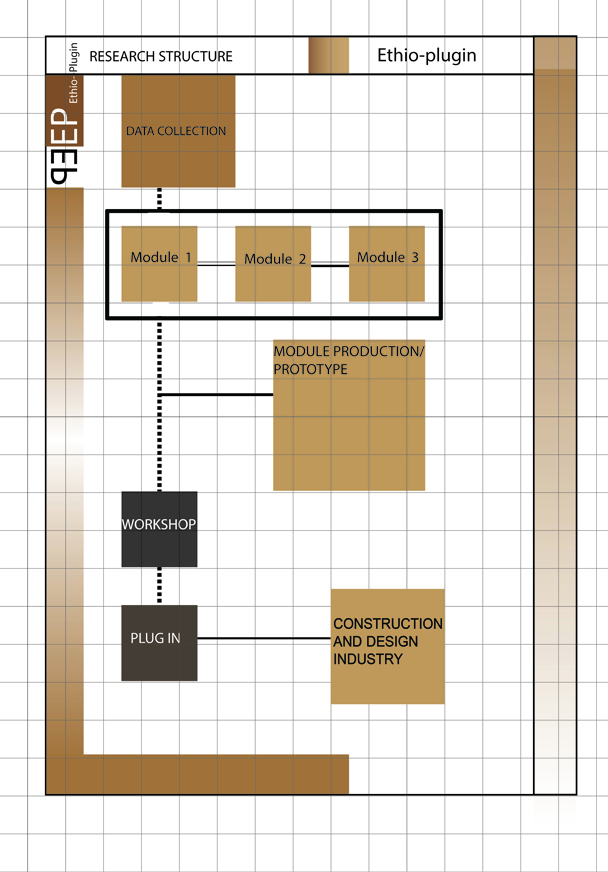
Location Scouting
Sites were selected based on their traditional and neo-traditional cultural expression of Ethiopia’s identity.
Guidelines: the location must be mapped on Google earth for reference and are also forwarded for website development as the website shall indicate the data collection process.
Locations: are not predefined and may vary based on researcher’s findings
Church and Mosque
Markets (open & shops)
Souvenir Shops
Residence (with cultural and traditional relevance)
Museums
Workshops
Data Collection
Picture:
Must be captured with a white background for black and colored objects and black or gray back ground for white color objects
A cube of 10x10x10cm with centimeter markings on it must be placed beside the object for reference scale while taking picture of the objects.
Camera must be 8MP or higher for clarity
Resolution: 3264x2448
A minimum of 6 views of the object must be taken
Additional views may be taken if object is complex
Natural light is recommended for the capturing of object
Time must mentioned
Naming of the picture files shall follow the regulation of the research documentation.
Measurement:
Tape meters should be used for dimensioning
All data’s collected must use metric system (cm and mm)
Precautions must be taken to minimize inaccuracy; measurements should be taken in precision of two decimal points. Eg. 00.00cm
Reference points for measurements must be clearly stated
Descriptions (information about the objects):
Must be from a credible source
Sources shall be clearly stated
Stage of artifact (condition), material, texture, purpose, historic and general background shall be stated
Additional Software:
Additional software’s can be used to collect (here the personnel assigned to collect data can be creative too come up with new ideas to gain more information from site. This is in addition to the given strategy)
Difficulty:
Limitations during data collection shall be adequately stated in the report.
When:
The time, place, type lighting, method shall be clearly stated along with a brief description of the context.
See the following example:
 |
 |
 |
 |
Module 1
Here data collected from site concerning Ethiopian heritages from the past will be digitized and made parametric for further transformation during use for design. See the following examples:
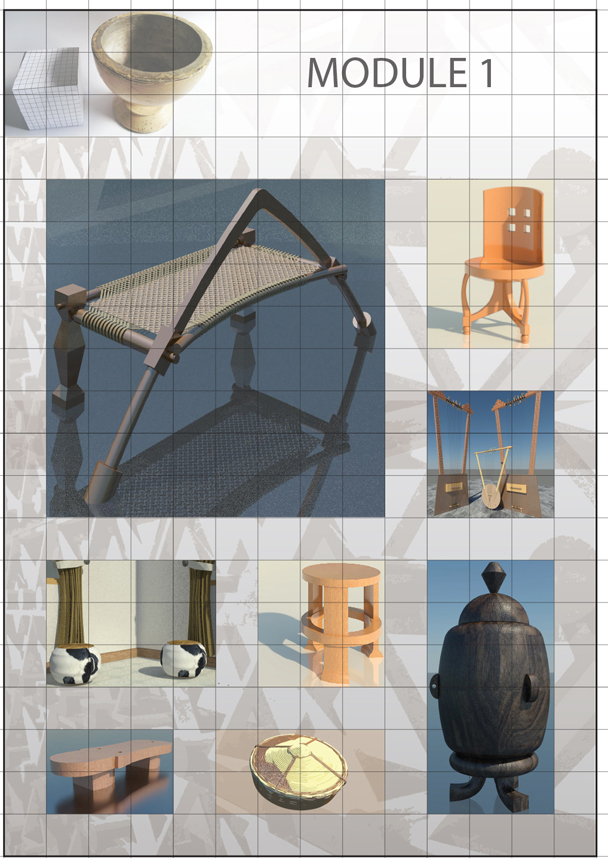
Module 2
Here data collected from site concerning Ethiopian heritages from the present practice will be digitized and made parametric for further transformation during use for design. See the following examples:
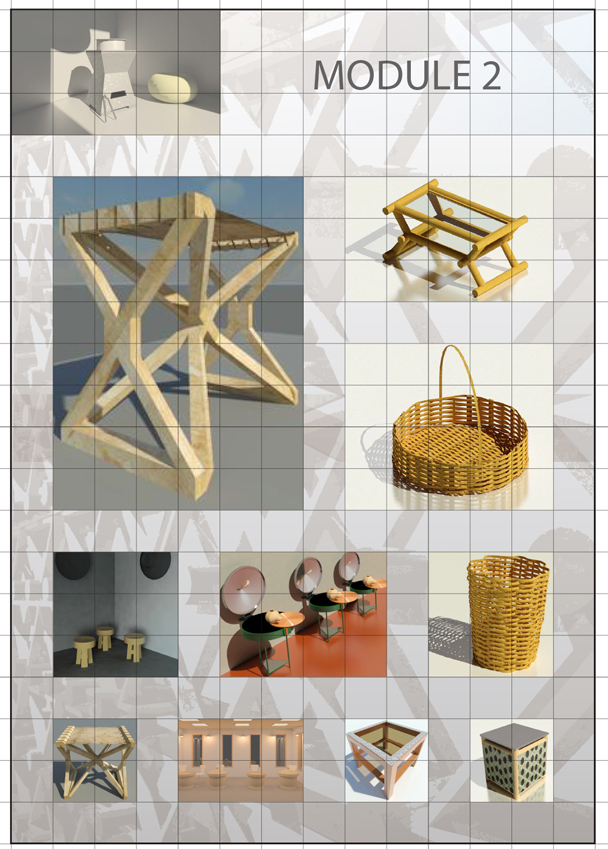
Module 3
Here data from module 1 and module 2 or models of both modules will be evaluated and are used to come up with transformed versions of components and are made parametric for further use during design. See the following examples:
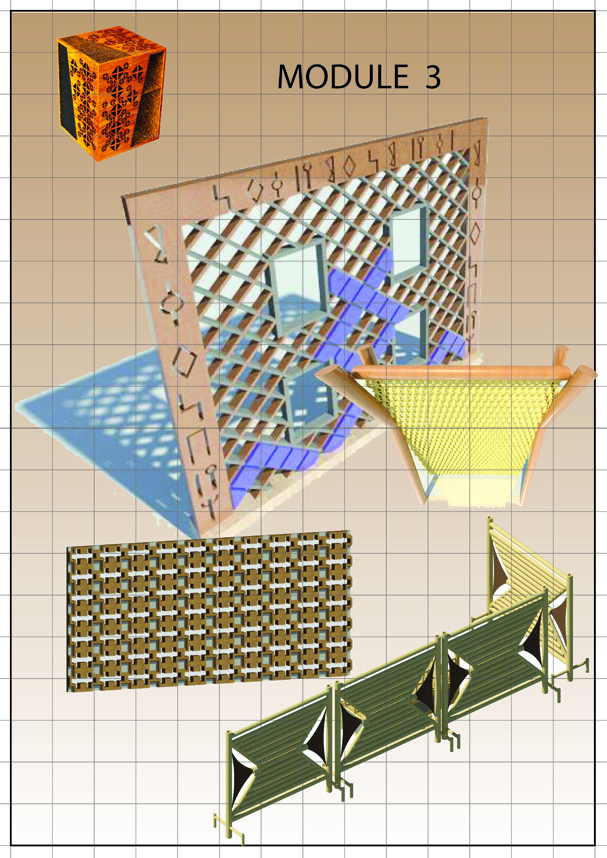
Workshop shall be conducted at the final stages of the research implementation. The research will have a considerable output during the time and will be used as an input for the workshop.
Workshop participants will be provided with the research output (plugins, libraries) and will produce a design work by making use of the materials provided. The workshop participants shall have past experience on software such as: Revit architecture, Archicad, Rhinoceros + Grasshopper.
The objective of the workshop is to indicate the practical implication of the research. And it will also intend to create a link between the industry and the research. In addition to the website development and other promotion plans.
Workshop assignment
Use all the models and modules you have been making till today and make a small project:
The Project shall not exceed ~ 25 square meters
Proportion of the foot print size and function is to be decided by the participant
If the participant did not manage to full fill the project with the provided models and modules, he or she can make a new one (component for the plug in based on the data collected) during the project.
PARAMETRIC MONKEY HEAD
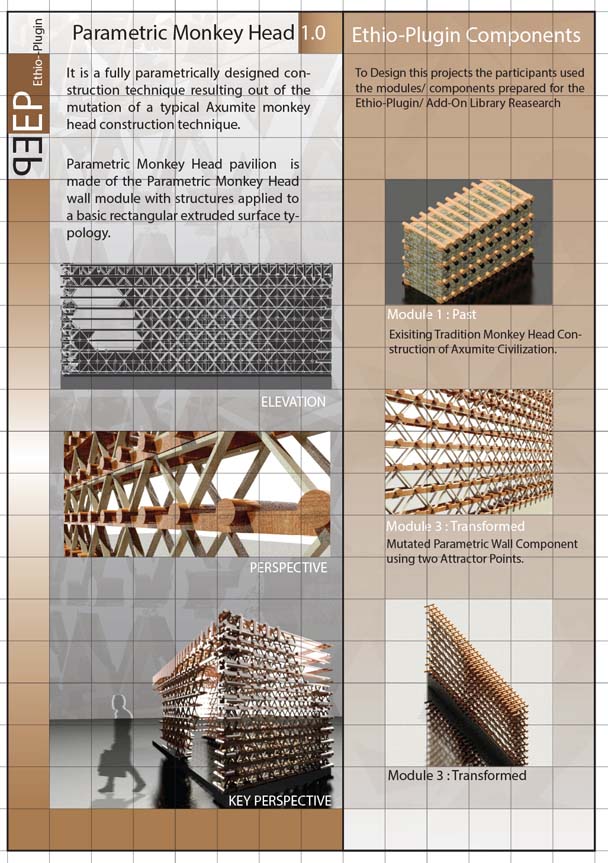
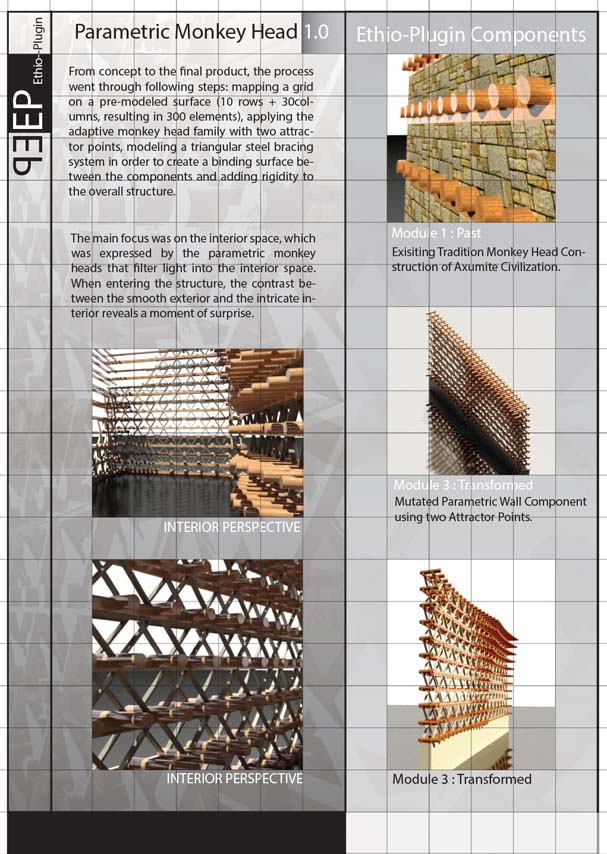
BAMBOO CAFE
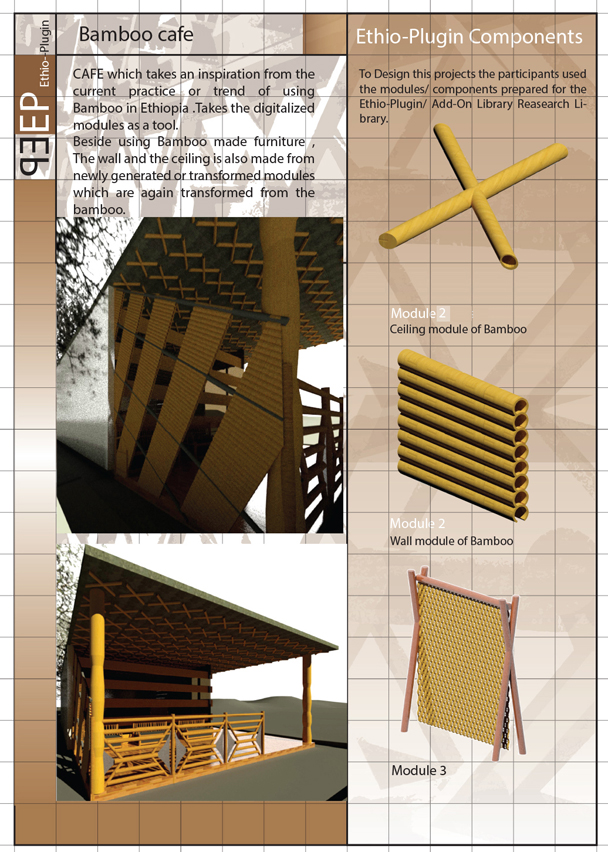
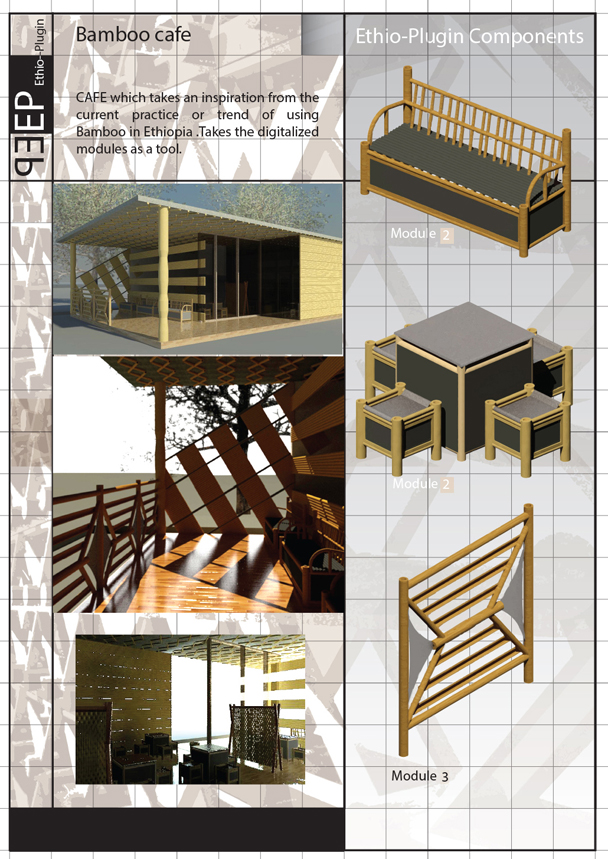
GAZEBO
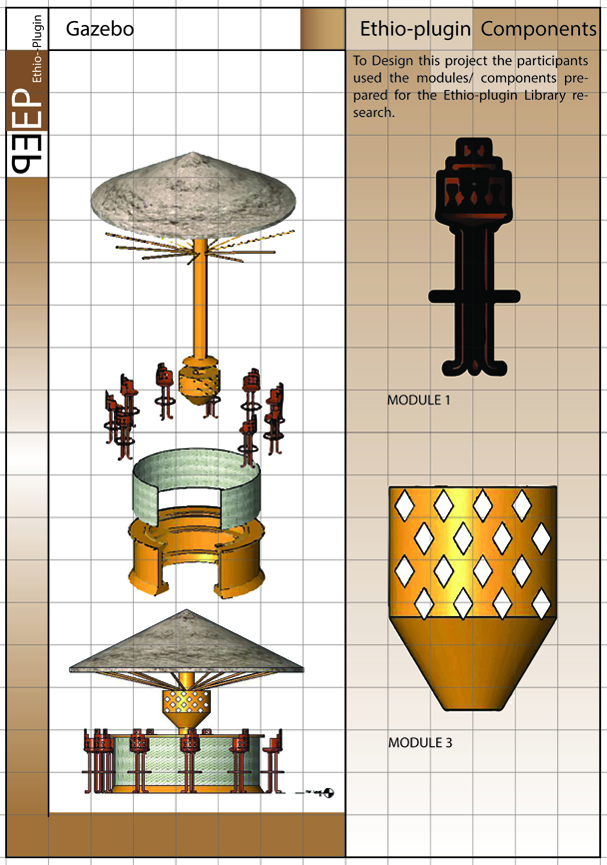
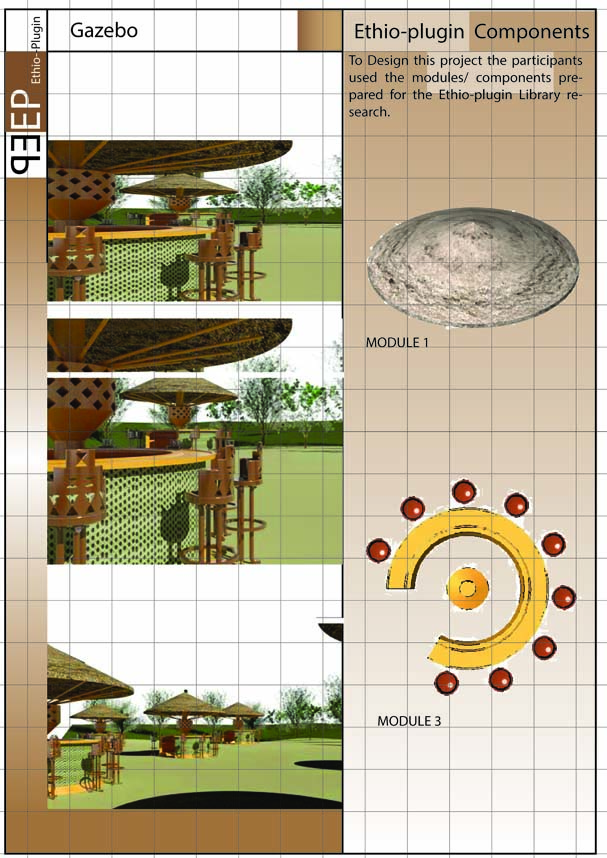
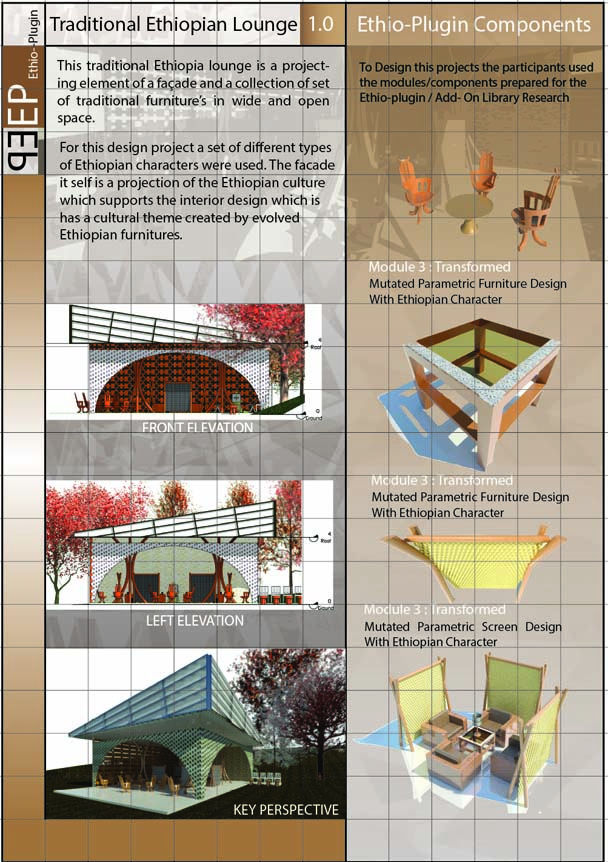
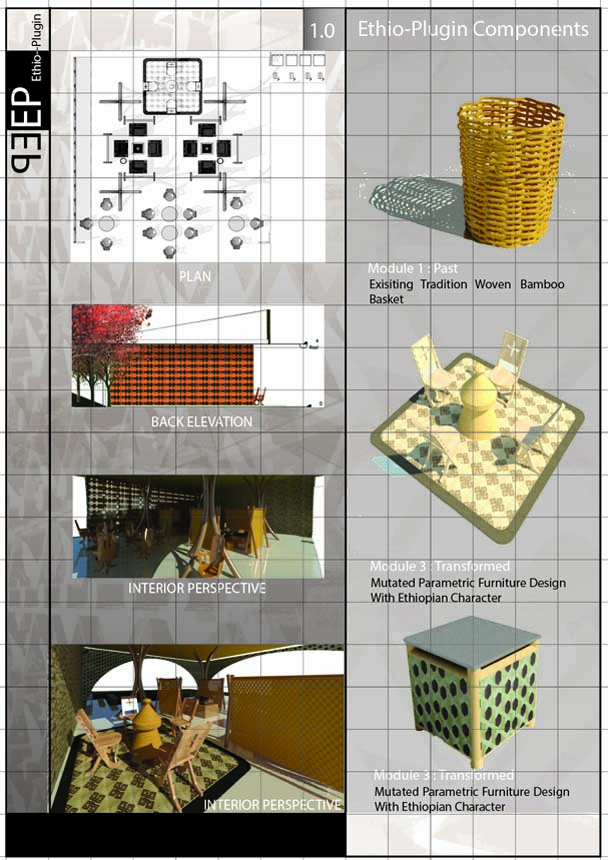
KITCHEN
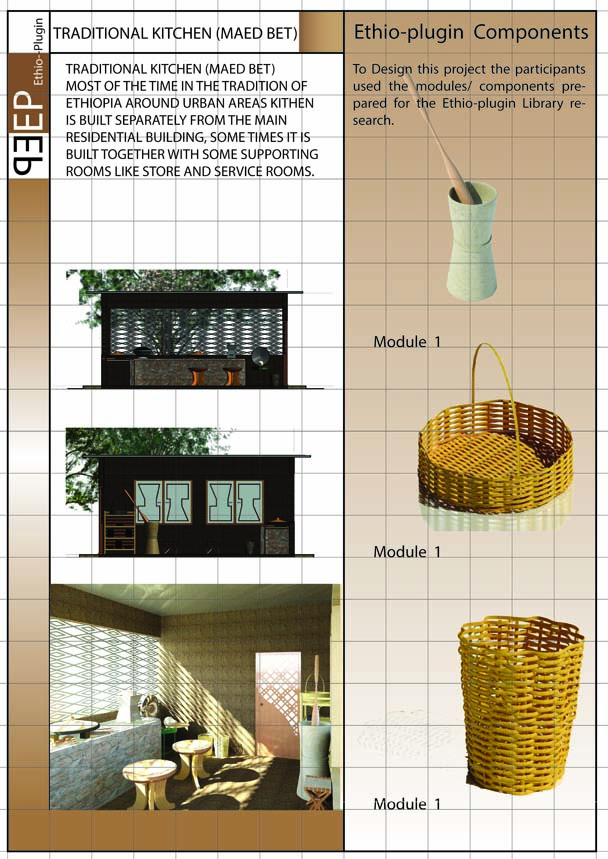
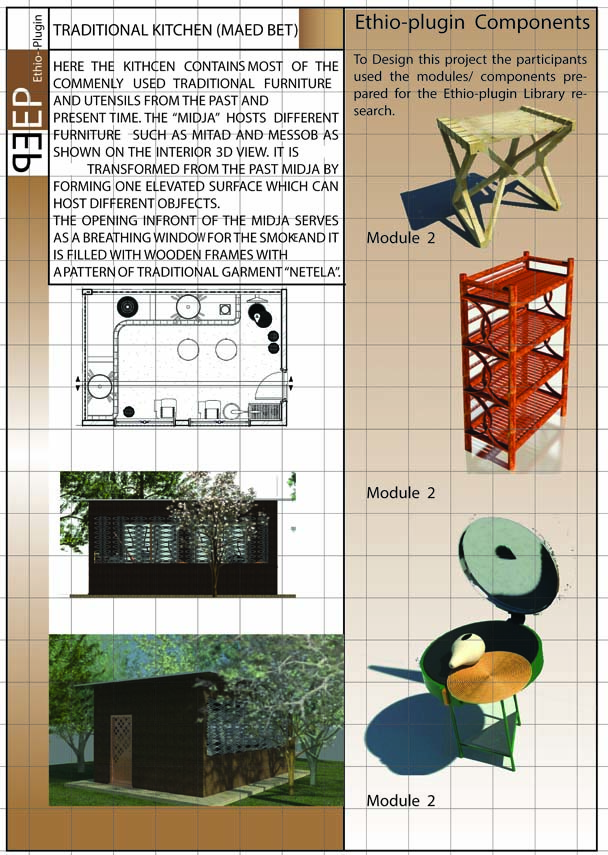
Credits Ethiopluin/ Add on library research:
EiABC Staff:
Ayele Bedada (coordinator and research head)
Melat Aseffa, Dr. Heyaw Terefe, Mengist Berhanu , Florian Stall
EiABC students:
Gebrekidan Getaw
Kirubel Nigussie, Shalom Lemma, Lemi Belete, Ermiyas Tessema, Orion Lemma, Liuel Hizikiyas, Beniyam Eshete, Benyam Shimeles, Andualem Bekele, Simon Mucheye, Yosef kassa, Matias Fekadeselassie, Bruke Bekele, Michael Bekele, Hermela Mulat along with the entire 2010 and 2011 entry architecture students.
Fhami Girma
TEAM PHOTO

A new book coming soon on the reserch area and its findings
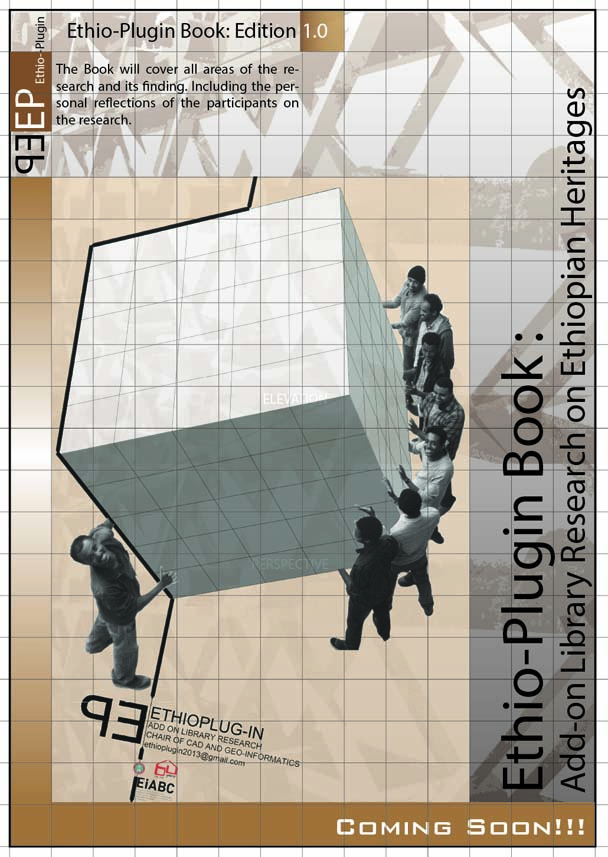
Ethioplugin_EiABC had a meeting with PROF. ANYAMBA TOM TEBESI dean of Architecture and building science department and TABITHA M.
Kiarie senior technologist at Nairobi University department of architecture and building science. On the meeting exchange of thoughts,
documents and future plans on research ethioplugin are carried out.
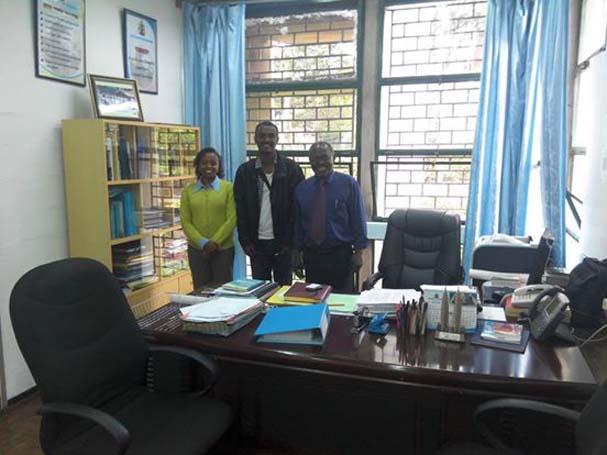
Nairobi University and Ethioplugin_EiABC:
Ethioplugin had an extended presentation and dialogue with Nairobi University architecture students on research ethioplugin and its objectives. Students of Architecture 5th and 2nd year from Nairobi University have shown interest to build similar endeavor as ethioplugin that is specific to Kenya. With further collaboration students from both EiBAC and Nairobi University will have exchange of research experience on ethioplugin and share outputs on common website.
